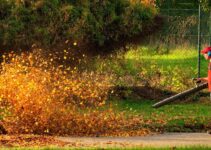To Tweet or Not To Tweet? It’s not a question anymore.
Not long ago, if you’d mentioned that there was tweeting about a disaster, most would think you were talking about Henny Penny or Chicken Little declaring that the sky is falling. But these days, social tweeting has become such a normal part of our daily lives that it was actually added to the Oxford English Dictionary as the second meaning of the word ‘tweet.’ And it would actually be unusual for photos, videos and observations about a storm or other emergency to NOT be posted to social media. It seems that we are all increasingly turning to Twitter, Facebook, and Instagram for more than social reasons. This is a trend that is not going unnoticed by many in government responsible for emergency management.
Social media channels, perhaps more than any other communication tool, offer officials at every level of government the most rapid way to reach out to those in harm’s way or already affected by an emergency situation. Of course, not everyone uses social media, so it’s not the only tool in the emergency communication arsenal, but it has definitely become a key component in most municipal emergency response plans.
The Rise of Social Media in Emergency Management
The potential for social media as a tool for emergency response communication was first sensed in 2005 when Hurricane Katrina crippled the Gulf Coast, leaving many stranded for days and even weeks. Those with access to online blogs and other forums used them to coordinate donations and other relief efforts, and perhaps even more effectively, to search for missing persons.
They say a picture is worth a thousand words. Without a doubt, seeing photos on your phone of homes burning from the California wildfires, people stranded on top of homes in the Mississippi River floods, and the devastation and chaos wrought by Hurricane Sandy and the Boston Marathon bombing brings a sense of immediacy and closeness like no other communication tool. Emergency responders have begun using the information distributed via social media to help triage and determine the areas of most immediate need.
Officials, responders, news media and citizens all recognize the power of immediate information during times of crisis, and it’s the first place many look to in times of catastrophe – to find vital information or to get the word out.

In fact, the University of San Francisco has declared social media the “next generation of disaster response” and their infographic convincingly illustrates why this is true.
Just a quick glance offers compelling statistics such as: 76 percent of disaster survivors use social media to contact friends to make sure they’re safe; 24 percent let loved ones know they are safe; 37 percent use info on social media to buy supplies and shelter; and 18 percent retrieve emergency information through Facebook.
Twitter Stands Out
Of all the channels currently available, the best and most effective social media platform for emergency response appears to be Twitter. This status primarily stems from its inherent nature of ‘in-the-moment’ interaction and required brevity. The use of hashtags also makes it easy to follow a specific event’s stream of content, essentially ‘crowdsourcing’ emergency information.
Shouting from Other Rooftops
When it comes to ‘traditional’ communication vehicles, some people look to newspapers for information, others watch television, and some can only get radio broadcasts, so each of these has to be included in a crisis management plan. The same is true when it comes to social media. Not everyone tweets, so other channels like Facebook and Instagram should be considered as part of your overall outreach strategy. Additionally, Facebook has taken measures to actively assist in times of emergency with its emergency check-in feature. Facebook proactively prompts users to confirm if they’re okay during natural disasters and emergencies. It has also added a dedicated page to help communities “prepare for and recover from natural disasters around the globe.”
Many state emergency management agencies are using Instagram accounts to provide tools and guides to help citizens prepare for, respond to, and recover from emergencies & disasters.
Social media has become such an expected piece of the emergency management response puzzle that communities are now coming under fire for not using it. For instance, the recent wildfires near Gatlinburg, Tennessee elicited harsh criticism for under-utilizing social media to warn and communicate.
Ready to Get Started?
A good place to start is the Centers for Disease Control and Prevention website. It offers a number of resources from a social media toolkit and guides for using both Facebook and Twitter to best practices for writing the most effective posts for your social media channels. A quick search of Google for “social media disaster response guidelines” also provides links to presentations that detail examples of recent natural disasters and how government agencies and municipalities have effectively used social media as part of their response plans.
Severe weather and other emergencies can occur quickly and, sometimes, with little or no warning. When you’re making your emergency response checklist, make sure a social media communication plan is part of it. Be prepared!
For more trending topics in local governments emailed to you quarterly, subscribe to the DeCoder Newsletter.


